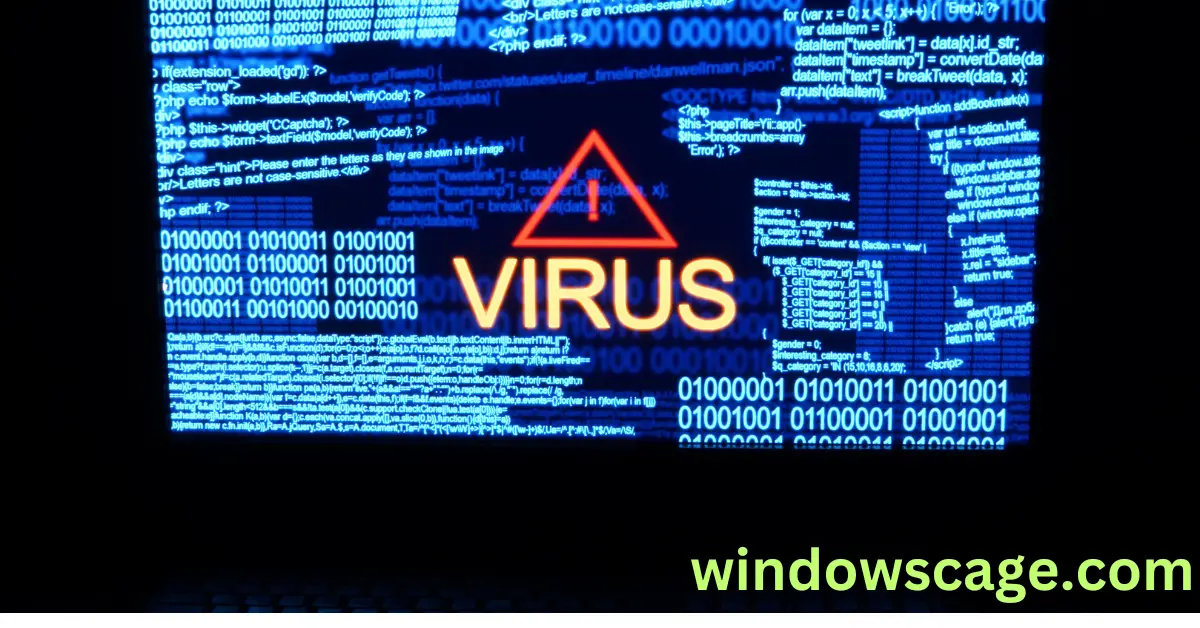RUBFAC 129pcs Metallic Gold Balloons Latex Balloons Different Sizes 18 12 10 5 Inch Party Balloon Kit for Birthday Party Graduation Wedding Holiday Balloon Decoration
10% OffIn today’s digital age, cybersecurity is of paramount importance. The ever-evolving threat landscape poses significant challenges for users and organizations alike. One such threat that has gained notoriety is the Windows PowerShell Virus. This article explores what a Windows PowerShell Virus is, how it works, common delivery methods, notable examples, and measures to detect and prevent infections. Additionally, we’ll highlight the importance of cybersecurity and provide best practices to safeguard against such malicious threats.
Windows PowerShell is a powerful command-line shell and scripting language primarily used by IT professionals and system administrators to automate tasks and manage systems efficiently. However, cybercriminals have found ways to exploit this tool for malicious purposes, leading to the creation of Windows PowerShell Viruses.
A Windows PowerShell Virus is a type of malware that leverages the capabilities of PowerShell to execute malicious commands and scripts on an infected system. These viruses can infiltrate computers, steal sensitive information, cause system damage, and facilitate unauthorized access to networks.
Read the Article on How to find uptime of remote computers using PowerShell?
Windows PowerShell allows users to execute complex commands with ease, making it an attractive choice for attackers. PowerShell Viruses typically use script files or inject malicious code into existing scripts to initiate the infection process.
Once executed, the virus gains access to system resources and can perform various malicious activities, such as downloading additional malware, collecting user data, or establishing a persistent presence to ensure the malware remains active even after the system reboots.
Cybercriminals employ various delivery methods to spread Windows PowerShell Viruses:
- Phishing Emails: Malicious attachments or links within emails trick users into downloading and executing PowerShell scripts.
- Malicious Websites: Infected websites may exploit vulnerabilities in browsers or plugins to download and execute PowerShell scripts.
- Malvertising: Malicious ads on legitimate websites may redirect users to sites hosting PowerShell viruses.
- Infected Software: Illegitimate or compromised software may contain PowerShell viruses.
Over the years, several notorious PowerShell Viruses have wreaked havoc in the digital realm. Some of them include:
- PowerSploit: A popular open-source PowerShell post-exploitation framework used for penetration testing, but also leveraged by attackers.
- TeslaCrypt: Known for encrypting files and demanding ransom payments for decryption keys.
- Emotet: Often delivered through phishing emails, Emotet is a sophisticated malware known for its worm-like capabilities.
Detecting and preventing PowerShell Virus infections require a multi-layered approach to cybersecurity:
- Antivirus Software: Invest in reputable antivirus software that can detect and quarantine suspicious PowerShell scripts.
- Firewalls and Intrusion Detection Systems: Deploy firewalls and intrusion detection systems to monitor network traffic for unusual behavior.
- User Education: Educate users about phishing attacks and the risks associated with executing unknown PowerShell scripts.
- Code Signing: Digitally sign PowerShell scripts to verify their authenticity and integrity.
With the increasing prevalence of cyber threats, prioritizing cybersecurity has become vital. Ignoring the risks posed by PowerShell Viruses can lead to severe consequences, including data breaches, financial losses, and damage to an organization’s reputation.
To enhance your cybersecurity posture and safeguard against PowerShell Viruses, consider the following best practices:
- Regular Backups: Maintain regular backups of critical data to mitigate the impact of ransomware attacks.
- Least Privilege Principle: Limit user permissions to prevent unauthorized access and execution of malicious scripts.
- Software Updates: Keep all software, including PowerShell, up to date to patch known vulnerabilities.
Windows PowerShell Virus poses a significant threat to individuals and organizations alike. Understanding its modus operandi and employing robust cybersecurity measures are essential in safeguarding against potential attacks. By staying informed, practicing safe browsing habits, and adhering to best practices, users can contribute to a more secure digital landscape.
Q1: Can a PowerShell Virus be removed without professional help?
Yes, some basic PowerShell Viruses can be removed with the help of antivirus software. However, more complex infections may require professional assistance.
Q2: Can PowerShell Viruses infect Mac or Linux systems?
No, Windows PowerShell Viruses are designed to exploit vulnerabilities specific to the Windows operating system.
Q3: Can PowerShell Viruses spread through USB drives?
Yes, PowerShell Viruses can spread through infected USB drives if autorun is enabled on the target system.

Greetings! I am Ahmad Raza, and I bring over 10 years of experience in the fascinating realm of operating systems. As an expert in this field, I am passionate about unraveling the complexities of Windows and Linux systems. Through WindowsCage.com, I aim to share my knowledge and practical solutions to various operating system issues. From essential command-line commands to advanced server management, my goal is to empower readers to navigate the digital landscape with confidence.
Join me on this exciting journey of exploration and learning at WindowsCage.com. Together, let’s conquer the challenges of operating systems and unlock their true potential.













